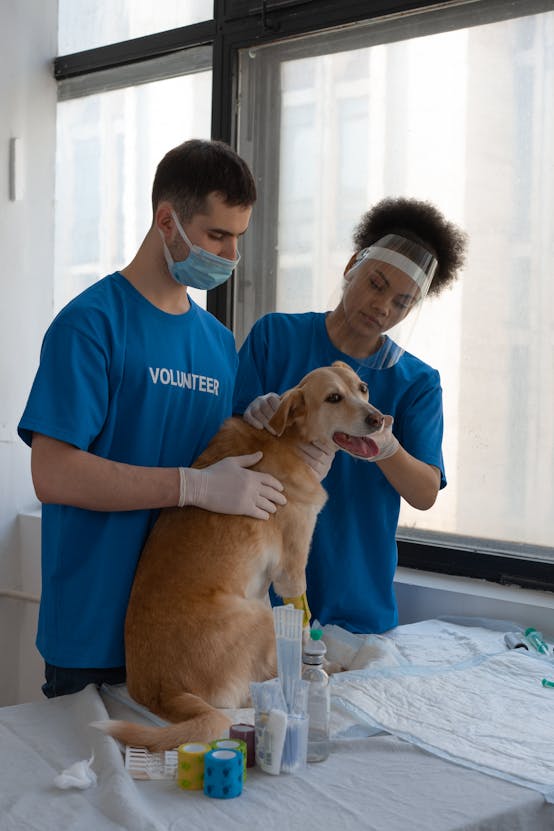Step-by-Step Cat Training Techniques for UK Owners
Navigating cat training UK demands a tailored approach that fits the unique lifestyles of UK cat owners. A fundamental strategy is positive reinforcement, rewarding your cat consistently when it exhibits desirable behaviour. Use treats or gentle praise to strengthen these habits—this helps your cat associate good behaviour with positive outcomes.
In the UK, many cats experience a mix of indoor and outdoor environments. Training should adapt accordingly. For indoor cats, focus on litter tray use and gentle play commands. Outdoor cats require additional cues for safe boundaries and recall commands to ensure their safety. UK cat owner tips often emphasize patience and understanding while transitioning indoor cats to outdoor spaces.
Also to see : Why Do Cats in the UK Prefer Certain Types of Weather?
Popular UK cat breeds like the British Shorthair or the Maine Coon may respond differently to training approaches. For instance, British Shorthairs tend to be more independent, so shorter, frequent training sessions work best. Conversely, Maine Coons are social and enjoy interactive learning. Adapting your step-by-step cat training to these breed characteristics enhances effectiveness and strengthens your bond.
Behaviour Training and Addressing Common Issues
Understanding cat behaviour training is crucial in managing common UK cat behaviour problems such as scratching, aggression, and anxiety. These issues often stem from natural instincts or environmental stressors. For instance, scratching is a normal way cats mark territory and maintain claw health, but it becomes problematic when directed at furniture or carpets. Redirecting this behaviour using scratching posts or deterrent sprays, combined with consistent reinforcement, helps shift the focus positively.
Additional reading : How Does a Cat’s Vocabulary Help Us Understand Feline Behavior?
When it comes to aggression or anxiety, identifying triggers is key. In multi-pet households, tensions may arise from competition over resources or space. UK cat behaviour problems often increase if outdoor access exposes cats to unfamiliar animals or dangers. Offering secure, safe spaces reduces anxiety and aggressive outbursts.
Consistency in cat discipline UK is essential. Gentle reprimands paired with rewards for good behaviour help cats learn acceptable limits without fear. Ignoring negative behaviour rather than punishment encourages gradual modification. Using this balanced approach ensures long-term success in mitigating common behavioural challenges, making life easier for both cats and their owners.
Litter Box Training and Hygiene Essentials
Successfully managing cat litter training UK requires establishing a consistent routine tailored to your home environment. Begin by placing the litter box in a quiet, accessible location away from food and water areas. UK cat hygiene standards emphasize cleanliness, so scoop the litter box daily and perform a full litter change weekly to prevent odors and discourage litter box problems.
If you notice your cat avoiding the box, consider common causes such as dirty litter, stressful surroundings, or an inappropriate litter type. Addressing litter box problems involves checking for medical issues and experimenting with different litter substrates suited to your cat’s preferences.
When selecting litter, UK pet owners have access to various options including clumping clay, silica gel, and biodegradable alternatives like wood pellets or corn-based litters. Each type offers benefits, so choose one that balances odor control, ease of cleaning, and environmental impact. Utilizing suitable products supports optimal UK cat hygiene and helps create a clean, inviting space for your feline friend. Maintaining diligence in these areas fosters a stress-free litter routine and fewer hygiene issues in domestic settings.
Teaching Basic Commands and Tricks
Building a strong foundation for your UK cat
Teaching basic cat commands UK forms the cornerstone of successful feline training. Start with essential commands like “come,” “sit,” and “stay.” These commands enhance communication and keep your cat safe in various environments. Positive reinforcement, such as treats and gentle praise, is crucial for encouraging your cat to respond consistently.
For introducing simple cat tricks, break down each trick into manageable steps. For example, to teach “sit,” gently guide your cat into position, rewarding immediately when successful. Repetition paired with patience ensures learning is retained. UK cat training advice often emphasizes short, frequent sessions—five to ten minutes daily—to avoid overwhelming your pet.
Consistency is key. Use the same words and gestures each time you give a command. This approach reduces confusion and speeds up learning. Always maintain a calm, encouraging tone to keep your cat engaged and willing to participate. Safety is paramount; avoid any training that might stress or harm your cat. Stick to positive methods and check UK cat training advice regularly to stay informed on best practices.
Positive Reinforcement Methods for UK Cats
Effective training starts with understanding your cat’s needs.
When practicing positive reinforcement cats UK owners swear by, the selection of the right rewards is crucial. High-quality cat treats UK such as freeze-dried meat or specially formulated dental snacks are proven to encourage desired behaviors effectively. These treats must be both appealing and safe, ensuring that cats remain motivated without compromising health.
Timing plays a key role in reward-based cat training. Immediate rewards reinforce the connection between action and consequence. If a cat sits on command, offering a treat within seconds helps the behavior stick. Consistency is as important—rewards must be given reliably every time the behavior occurs to shape habits effectively.
Avoiding negative reinforcement is essential. Punishment, such as yelling or physical discipline, often leads to stress and mistrust. Instead, Labrador-trained cats in the UK respond better to encouragement and gentle guidance. Negative reinforcement can cause anxiety, making cats less likely to repeat the desired behavior.
Using reward-based methods helps build a strong bond with your pet while promoting long-term positive behavior changes that are both humane and effective.
Considerations for Indoor vs Outdoor Cats in the UK
Balancing safety and freedom for your feline friend
When deciding between indoor vs outdoor cats in the UK, understanding local regulations is crucial. UK cat safety regulations emphasize minimizing risks from traffic, predators, and wildlife. Many councils advocate keeping cats indoors during nighttime to reduce accidents and protect local fauna.
CAT TRAINING ENVIRONMENTS differ significantly based on access. For indoor-only cats, stimulating activities through toys and climbing structures prevent boredom and support mental health. In contrast, outdoor-access cats benefit from training that encourages recall and safe boundary exploration to avoid dangers such as roads and toxic plants.
Outdoor enrichment is essential for cats spending time outside. Creating safe zones, like enclosed gardens or supervised walks with a harness, allows cats to explore while minimizing harm. Offering varied stimuli—such as scent trails and perching spots—keeps their instincts sharp without exposing them to hazards.
Maintaining a balance between protection and freedom requires attentive training and environment adjustments. Whether you opt for strictly indoor life or allow outdoor ventures, tailoring the approach to your cat’s needs ensures well-being and aligns with UK cat safety recommendations.
Resources, Expert Tips, and Further Support for UK Cat Owners
Explore helpful tools and guidance to ensure your cat’s well-being
Navigating cat care in the UK becomes easier with access to trusted UK cat resources. Organisations such as Cats Protection and the RSPCA provide extensive advice on cat health, behaviour, and welfare. These charities often offer training workshops and online materials valuable for cat owners needing cat training help UK.
For ongoing support, engaging with community forums allows you to share experiences and ask questions. Platforms dedicated to UK cat owners foster peer-to-peer advice, creating a network where you can find tailored tips and reassurance from others facing similar challenges.
Knowing when to escalate concerns is crucial. If behavioural issues persist despite training efforts, seeking guidance from a professional cat behaviourist is recommended. These experts diagnose complex problems and tailor interventions specific to your cat’s needs, ensuring healthier interactions.
By utilising a combination of expert cat tips, UK-based support networks, and professional advice, cat owners can effectively nurture their feline companions with confidence and care.
Frequently Asked Questions About Cat Training in the UK
Understanding cat training FAQs UK helps many owners address typical challenges faced in day-to-day interactions. One prevailing UK cat owner question is: How long does it take to train a cat? Cats, unlike dogs, have a more independent nature, so training often requires patience over weeks or months. Consistency and positive reinforcement are key.
Another common inquiry is: What are the best techniques to manage unwanted scratching? Experts recommend providing scratching posts and rewarding use. Discouraging furniture scratching with texture deterrents can be effective.
UK cat owners often seek advice on solving litter tray issues. A quick solution is to ensure trays are cleaned regularly and placed in quiet, accessible locations. If problems persist, a vet consultation is advised to rule out medical causes.
For those searching for reputable guidance, official UK cat behaviour advice often comes from organisations like the Royal Society for the Prevention of Cruelty to Animals or veterinary professionals. Combining expert advice with community anecdotes creates a well-rounded support network for cat training in the UK.
Exploring these cat training FAQs UK equips owners with practical tools to foster happier, better-behaved cats.



